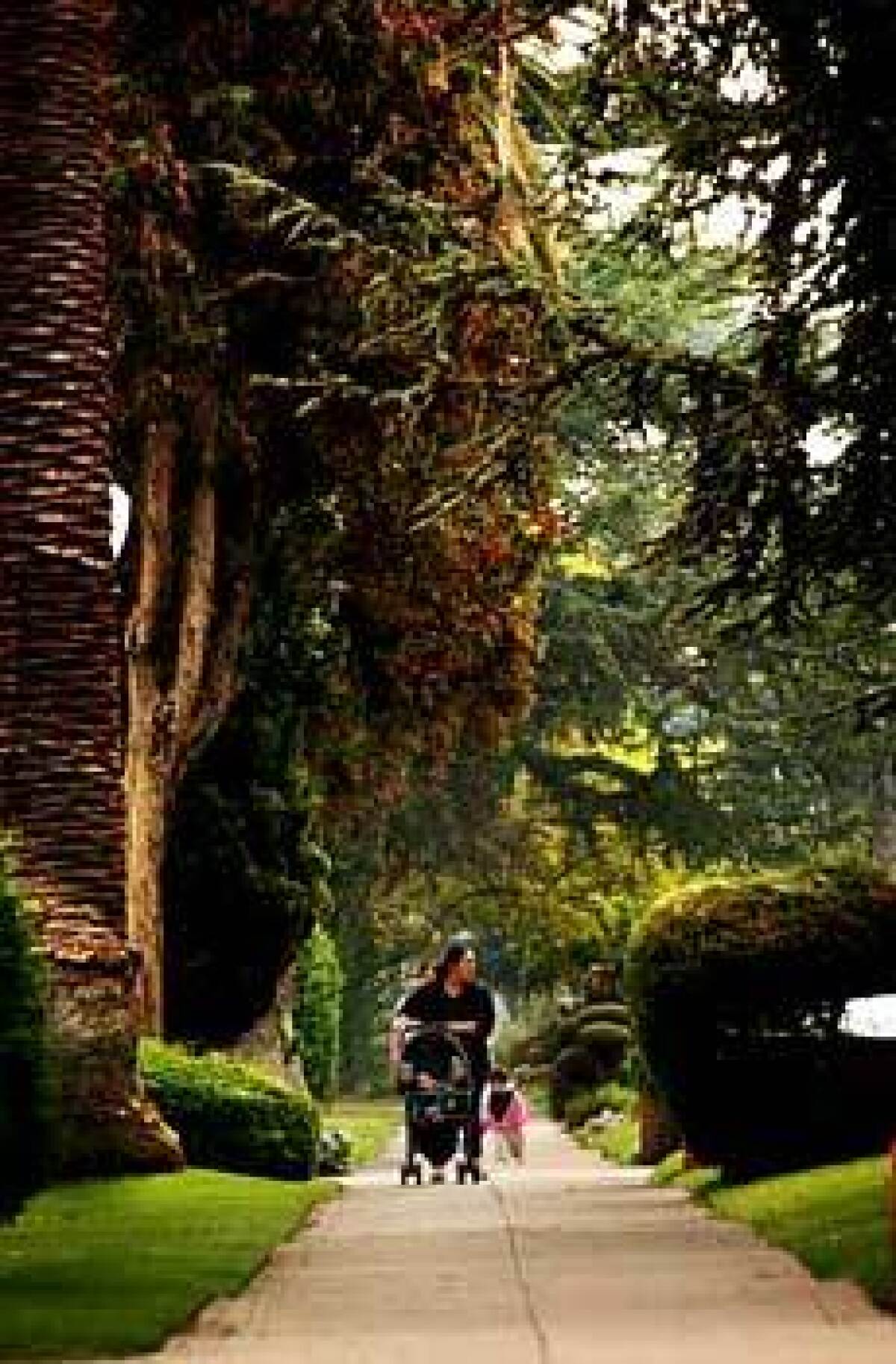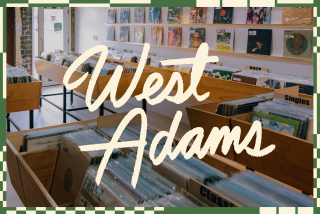History behind iron gates in Lafayette Square

- Share via
The basics
The community of 236 homes is bordered by Crenshaw, Venice, Washington and West boulevards. Although founded in 1913 by developer George Crenshaw, it is named after the French marquis who fought alongside Colonists in the American Revolution. Other than sharing his namesake, the neighborhood has no connection to Lafayette Park in the Westlake area near downtown Los Angeles.
Calling card
For a large house on a comparatively modest budget, Lafayette Square may be the answer. The average home size is 3,600 square feet, with many as large as 5,000 to 6,000 square feet. Most of the properties have period details: Juliet balconies, mahogany staircases and libraries, sitting rooms, stained glass windows, triple crown molding, soaring ceilings -- even four-car garages.
Architecturally, there’s something for all tastes: Tudor, Craftsman, Victorian, Mediterranean, Norman and Prairie.
Wow factor
Although in the middle of Los Angeles, the tree-lined streets are as quiet as the suburbs due to wrought-iron gates, which have enclosed the neighborhood and eliminated cut-through commuter traffic since the early 1990s. The only way into the neighborhood by car is St. Charles Place, a welcoming broad street with a landscaped center strip. The result is an urban oasis where children ride bicycles and play outside.
Insider’s view
Lafayette Square has shifted between white-only homeownership during the 1920s through the 1940s to nearly all African American homeownership in the 1950s after restrictive deed covenants preventing people of color from buying homes there, as well as in other well-to-do Los Angeles neighborhoods, were lifted in the 1940s. The community is more racially mixed now as more white families, priced out of the Westside and Hancock Park, began moving into the neighborhood a decade ago.
Stock report
At the end of January, there were three homes in Lafayette Square on the market for $695,000, $825,000 and $950,000. According to Lafayette Square resident Rhonda Payne, a real estate agent with Prudential California Realty, John Aaroe, there is very little turnover. Residents “pass their properties on to family members, or they stay until they pass away,” she said. “It’s a great community.”
Last year, just 12 homes sold in the area. Buyers should factor in renovation costs, as many homes haven’t changed hands in years and need work.
Historical values
Single-family detached resales:
Year...Median price
1990... $330,000
1995...$188,000
2000...$265,000
2001...$427,000
2002...$527,046
Report card
In the last decade, more young families have moved to Lafayette Square, but Los Angeles Unified public schools in the area are not their top choices for education. Children generally attend private schools.
Bad news, good news
The area is half a mile from the 10 freeway--great for trips downtown or to the beach. But the low-slung, nondescript business storefronts nearby offer little shopping or dining. A revitalization may be in the works with the scheduled summer completion of the neighboring $8-million Washington Boulevard Performing Arts Center, a 23,300-square-foot complex that will house a theater, restaurant and art gallery. City officials and residents hope the new complex, once the site of the historic Ebony Showcase Theater, will spur a renaissance in the area.
Sources: Rhonda Payne, a real estate agent with Prudential California Realty, John Aaroe; Greg Fischer, historian; DataQuick Information Services.
More to Read
Sign up for Essential California
The most important California stories and recommendations in your inbox every morning.
You may occasionally receive promotional content from the Los Angeles Times.






